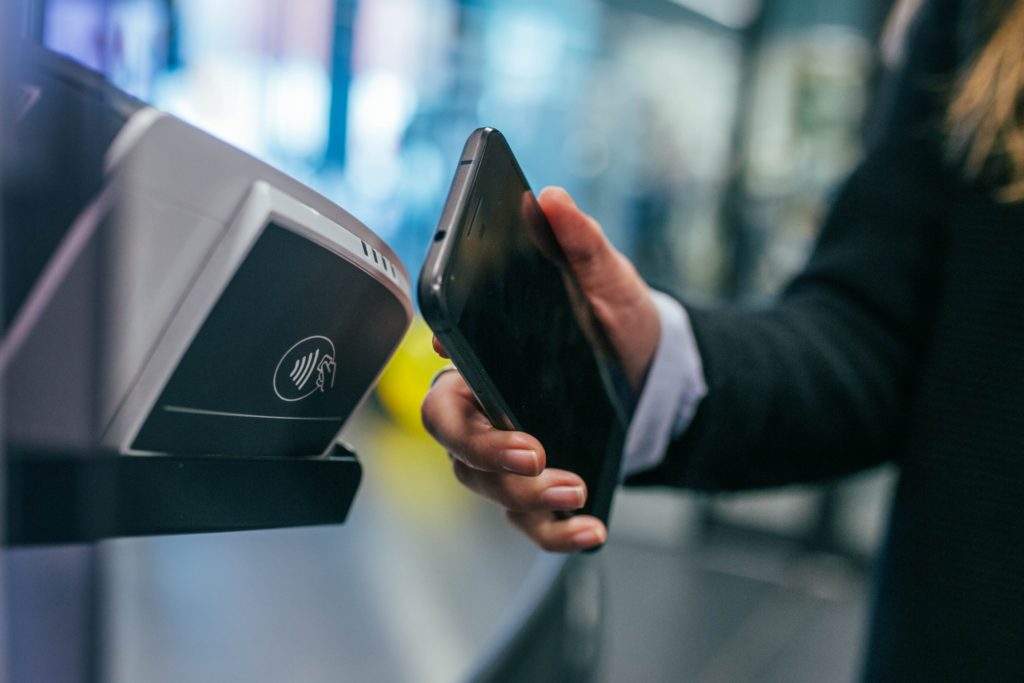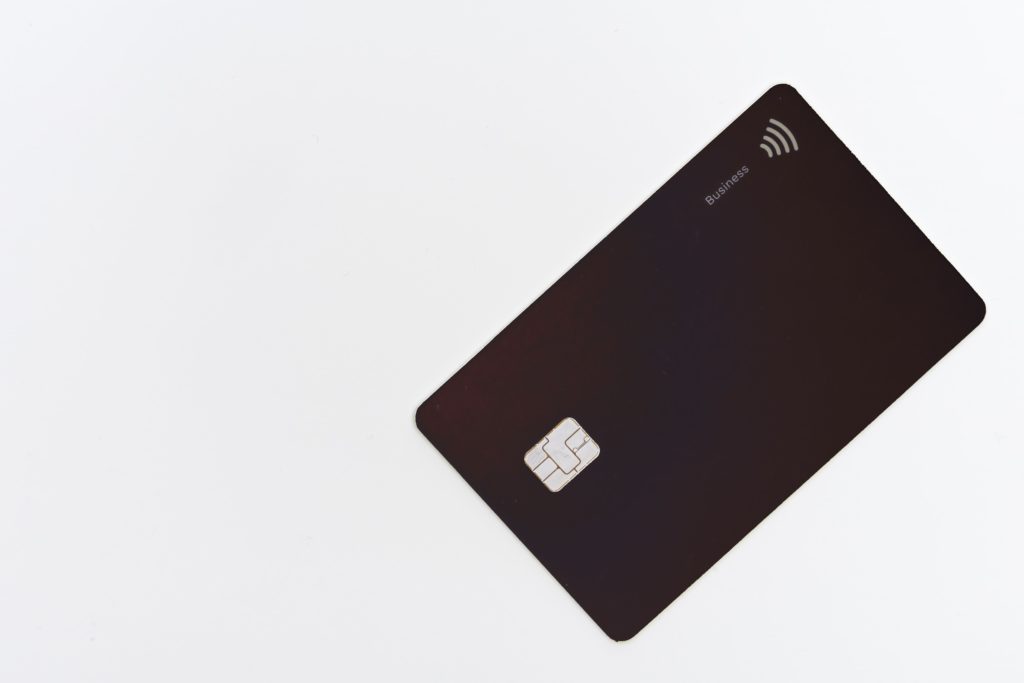Invented in 1989, Bluetooth is a standard for exchanging data between a source device and another device over short distance. It was created as a replacement of cable technology. Unlike a wired connection, Bluetooth allows you to move freely. There are no cables that can restrict your movement. You can use Bluetooth to share photos, audio, and videos with friends. You can also use it to listen to your favorite music via your wireless headphones, connect your laptop, tablet, or computer to peripheral such as mouse and keyboard or even to receive calls when driving. We shall discuss its other uses later.
NFC (Near Field Communication) is another wireless technology which has transformed the way we communicate. Both NFC transmit data using radio frequencies. The main difference between Bluetooth and NFC is distance. Bluetooth has a wider range than NFC. Bluetooth can work up to 30 feet while NFC can work to a distance of 20 cm.
Additionally, unlike Bluetooth, NFC transactions consume some amount of battery as compared to Bluetooth file transfer. However, NFC transactions are much faster than Bluetooth. It’s actually ten times faster than Bluetooth.
All modern smartphones are both Bluetooth and NFC enabled. However, NFC is mainly used in money transfer. It is a widely growing technology and is also used in healthcare and the banking industry. Examples of NFC payments apps include, Android Pay, Samsung Pay, and APPLE Pay. In health, NFC service app development is quite popular. It enables quick and fast transactions.
NFC vs. Bluetooth: A Detail Comparison

NFC is a wireless technology that allows pairing one device at a time. It transmits data at speeds of 400kbps. It main use is in money transfers at point of sale terminals. Anyone can use NFC technology. You don’t have to be a computer geek. Bluetooth on the other hand is mainly for sharing small files between similar devices.
NFC is an advancement of RFID (Radio Frequency Identification) technology. It works on the principle of sending information over radio waves. In order to complete the transfer, the two devices must be placed close to each other.
Bluetooth is a WPAN and has a range of up to 10 meters and transfers data at speeds of around 2mbps. Although NFC AND Bluetooth are different technologies, they are both used for data transfer. However, Bluetooth has a higher bandwidth than NFC. Both these technologies have some similar functionality. But we can’t say which of them is better than the other. Let’s look at factors and situations where NFC is better than Bluetooth.
- Unlike Bluetooth, NFC doesn’t require pairing. Connections are instant. This makes NFC faster than Bluetooth. You can use NFC anonymously because it doesn’t have any kind of records. IN Bluetooth, you can find a list of the last paired devices.
- Unlike Bluetooth, you can use NFC to make payments.
Similarities between NFC and Bluetooth
- Both technologies are used for communication and data transfer.
- Although they transfer data at different speeds, both are ideal for transferring data over short distances.
- Both are wireless technology standards
Differentiating Between NFC and Bluetooth
- NFC and Bluetooth have different operating range. For NFC, it’s desperately close. NFC I is only meant to work when the two devices are brought close to each other. Bluetooth has a range much wider than NFC. The range of Bluetooth depends on the device class. There are three Bluetooth device classes. Class 1 devices have a range of 100 meters; class two devices have a range of 10 meters, while class 3 devices have a range of about 1 meter. Most of the Bluetooth devices we use such as headphones are class 2 Bluetooth device.
- Connecting two NFC devices is hassle-free. Bluetooth pairing may take a few seconds or may fail to connect because of some technical problem. You need to turn Bluetooth on first and then pair the devices. On the other hand, NFC connections are instant and rarely fail. Bringing the two devices is enough to facilitate communication between the two devices.
- NFC is much safer than Bluetooth. This is because NFC requires a very close range than Bluetooth. The two phones need to be in contact with each other. Besides, Bluetooth a Bluetooth connection is prone to attacks from hackers. Examples of Bluetooth hacking techniques include, Bluebugging, Bluesnarfing, and Bluejacking.
- Another difference between these two technologies is speed. Bluetooth transmits data at just over 2 Mbps. This is good enough to send photos to another device. In contrast, NFC has a much slower pace at just over 400 kbps. Again, by design, the purpose of NFC is not to facilitate file transfer.
- Because of the short range and slow speed, NFC doesn’t need a powerful radio unlike Bluetooth. This makes NFC to consume less power and can be left on at all times and it won’t affect the phone’s battery that much. Bluetooth Low Energy (BLE) is the latest development of Bluetooth technology. It consumes less power when transferring data over Bluetooth. In this Bluetooth version, the power consumption is lesser than NFC.
- Lastly, NFC has the ability to operate with passive RFID tags such as those used on dogs to track their location. This means that you can use your smartphone to read the ID of a lost dog and find the owner. On the other hand, Bluetooth is not compatible with RFID.
The differences between NFC and Bluetooth can easily be explained by their distinct functions. Let’s look at some of the uses and applications of these two technologies.
Uses and Applications of NFC technology
- Smart Cards

Payments via NFC integrated smartcards is much easier compared the traditional multiple step payment process. Examples of NFC embedded smart cards include top payment services like Visa and MasterCard. You can use these NFC integrated cards for fast payments at parking tickets, grocery shops, to redeem coupons and so on.
- e-Wallet
The use of smartphones for contactless payment is on the rise. You can use your smartphone to make payments with a simple tap or waving it close to the reader. If you are a business owner, you can integrate an NFC payment option in your business. Android Pay, Apple Pay, and Google Wallet are some of the most popular smartphone payment systems. You can also use Android Beam to share data using your smartphone.
- Smart Ticketing
NFC chips can be used to replace the conventional ticketing systems with smart tickets for train, bus, and airlines. You can also use NFC tags for movie tickets, smart posters, advertisement, and flyers. To access a reserved area, customers can just tap an NFC tag located at the assigned location. To find more information, you only need to scan the smart tag.
- Healthcare
NFC can be used in medicine and healthcare to prescribe medicine, easier check in, tracking records, checking status of patients by embedding NFC tags to a patients chart.
- Keyless Access
This is another prominent and popular NFC application. You can use NFC and RFID tags to access restricted areas with an auto detect feature. You can use NFC to replace identification badges, and access keys, and for easier access to cars and other vehicles.
- Manufacturing
Manufacturing industries use NFC to identify products in different process stages. It also helps in tracking products during shipment.
Uses and Applications of Bluetooth Technology
Bluetooth technology is designed to operate in an environment with many users. You can connect up to 8 devices in a small network called a piconet. You can have ten such piconets in the same coverage range. To ensure security each link is encoded and protected against interference and eavesdropping. Bluetooth supports three general applications:
- Data and Voice Access Points: Bluetooth supports real time data exchange by providing effortless wireless connection between portable and stationary communication devices.
- Cable Replacement: Bluetooth eliminates the need for wires needed to connect any kind of communication device. Bluetooth ensures a connection as long the two connecting devices are within range even if they are not within line of sight. You can use and optional amplifier to extend the range of Bluetooth.
- AD HOC Networking: Bluetooth enabled devices can establish instant connection with each other as soon as they come into range.
The following are some of the ways that you can use Bluetooth:
- To transfer files, images and MP3 or MP4 between cellphones.
- To make calls from a wireless headset connected remotely to a cellphone
- To set up home networks
- To eliminate cables linking computers to printers, keyboards, and the mouse.
- To send small advertisements from Bluetooth enabled advertising hoardings to other discoverable Bluetooth devices.
Bluetooth and NFC Frequency

As mentioned earlier, both Bluetooth and NFC use radio waves to exchange information. The common frequency in NFC is about 13.5 MHz. Bluetooth transmits at 2.4 GHz. NFC is highly intuitive. No pairing or bonding is required. You just need to transfer the data.
Summary
- Summary has a much shorter range than Bluetooth
- Bluetooth requires devices to be paired while NFC does not
- NFC has a different set of uses than NFC
- NFC works with paired devices while Bluetooth does not
Final Words
It’s difficult to say which is better between these two technologies. Bluetooth is meant for prolonged connection with other devices. It thus requires fast data speeds and an acceptable range. On the other hand, NFC is not meant for continuous data transfer. It is meant for short bursts of data to read tags. Its applications include payment systems, door lock systems, and other similar applications.
